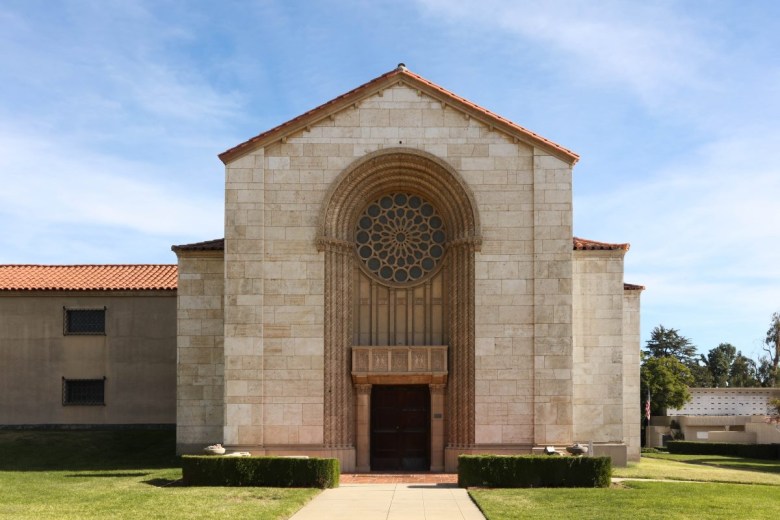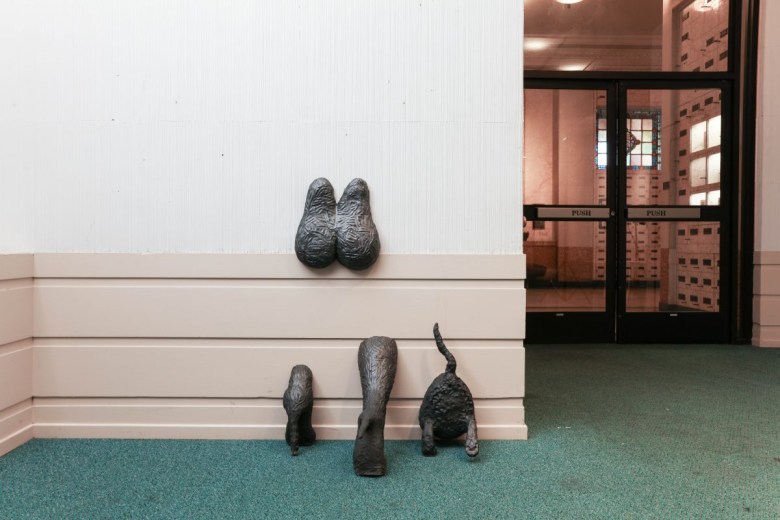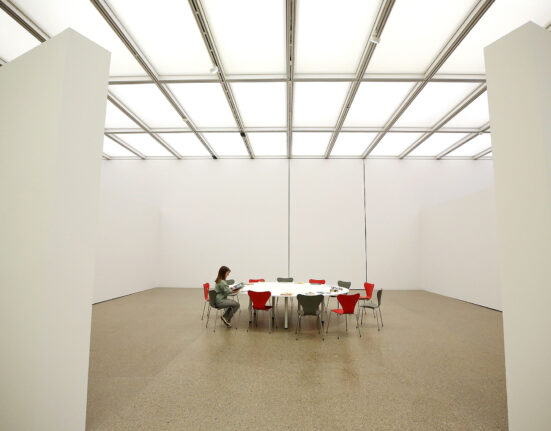LOS ANGELES — In The American Way of Death, first published in 1963, author Jessica Mitford critiqued the United States funeral industry for undermining the dignity of the deceased and exploiting grieving families for financial gain. Why, if our daily lives are so commodified, wouldn’t our deaths be commodified, too? That was the central question posed by Dignity Plus, an artist-curated pop-up show staged this month in an old municipal art gallery in the Mountain View mausoleum in Altadena, an enormous funeral home with hopeful plans to utilize its space for long-term arts programming.
Curated by ArtCenter College of Design alumna Jasminne Morataya, the three-day exhibition featured sculptures and paintings by 14 different artists who addressed themes of mortality and memory, their works briefly replacing the academic landscape paintings that typically gather dust during mausoleum hours.
Morataya told Hyperallergic that her decision to host an exhibition at Mountain View, established in 1882 and home to Hollywood’s most filmed graveyards, was a result of an ongoing research affinity, proximity to campus, and a need for a gallery space that wasn’t commercial.

Rent in Los Angeles, both residential and commercial, is set to go up at least 6% in February after the City Council voted to end COVID-era rental protections for tenants. Industrial vacancies, where galleries often choose to set up shop, went up 2% earlier this year with banks tightening loan restrictions due to the economic climate. The lack of affordable options points to a need for artist-run spaces in LA, the presence of which democratizes the types of art and projects seen across the city.
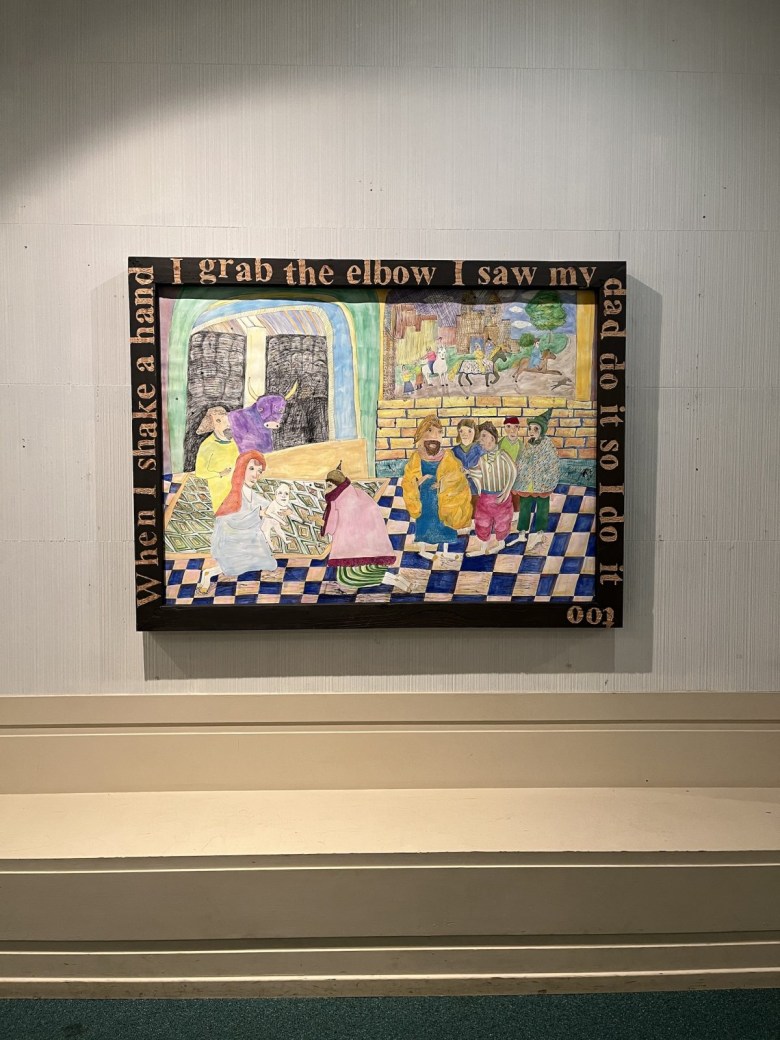
“Hospital waiting rooms, law offices, cemeteries, legacy restaurants — all of them possess most of the existing infrastructure needed to host a show, a reading, or a screening, with minimal modifications,” Morataya said. “There are interesting relationships waiting to be carved out between artists and the people who manage these distinct parallel zones, in a way that might not happen with a traditional tenant-landlord project space.”
It also wasn’t the first time the gallery was used by an artist in search of a space. In 2010, the mausoleum hosted Eternity Forever by performance artist Marnie Weber, who returned for the opening of Dignity Plus.
To get to the gallery, one must glide through a sprawling marble hallway of the cathedral-esque Mountain View Mausoleum, illuminated by sunlight pouring through ornate stained glass; up the stairs past “numerous crypts adorned with Christian iconography and Freemason symbols,” as one artist put it. The room feels entombed in the mid-1980s, with stained jade green wall-to-wall carpeting and pale peach walls striated with texture and dust. An ajar closet door reveals the gallery’s traditional landscape works now stacked against a rack of cleaning supplies, tissue boxes, and silk flowers. In each corner sit sculptures, and each recessed wall holds a painting. A video area in the back is set up to display memorial footage; it plays “Olga’s Shell” (2023) by Anna Eisenman instead.

“Rapture” (2023) by Andy Bennett shows the rumpled costume of a classic magician — top hat, cape, bow tie, gloves, wand — all strewn across the floor as though they disappeared into thin air. The deflated magician has vanished, that is to say, “raptured” — a millennialist phrase pulled from the Book of Revelation in the Christian Bible and made popular in the 1990s by the actor Kirk Cameron and the Left Behind book series.
“I think about the work as being about belief: In my case it’s belief in art, in the magician’s case it could be belief in magic, and in the case of religiously inclined people it’s belief in God,” said Bennett. “And if the belief is strong enough, the practitioner transcends, or disappears,”
Early-screen technology focused heavily on digitizing the classic photo album, making images last longer than human memory, if programmed correctly. Juliana Halpert’s “Untitled #1” and “Untitled #2” featured an egg-shaped metal keychain with a photo screen that shuffled pixelated images of her two cats, dangling from a metal armature and installed onto a pedestal found in the gallery closet.
“My works are about recalling a period in which digital images — and the idea that you could carry them around in your pocket — were still novel,” Halpert said.
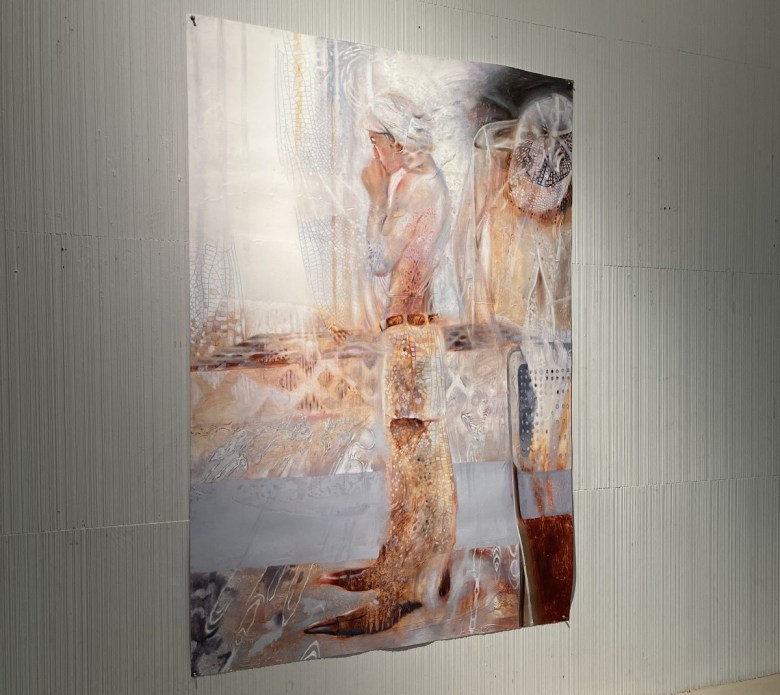
What made both works particularly successful was that they felt made in the same era in which the room was decorated. The postmodern look of the pedestal matched the shop-worn technology Halpert incorporates, while Bennet’s missing magician drew the eye to the floor, back to the outdated carpet. Other highlights included an iridescent, mind-bending painting by Madelyn Kellum and two ink, blood, and stained-glass pieces by Valantyn Koziak. An empty pulpit stood in the center of the room with a floral funeral arrangement.
“Choosing the mausoleum for the art show was not a particularly incongruous decision. It brought me closer to my own values,” said Morataya. “People visited a historical part of Altadena, I engaged the community in which I live, and the art was imbued with a contextual resonance that would not have occurred elsewhere.”
